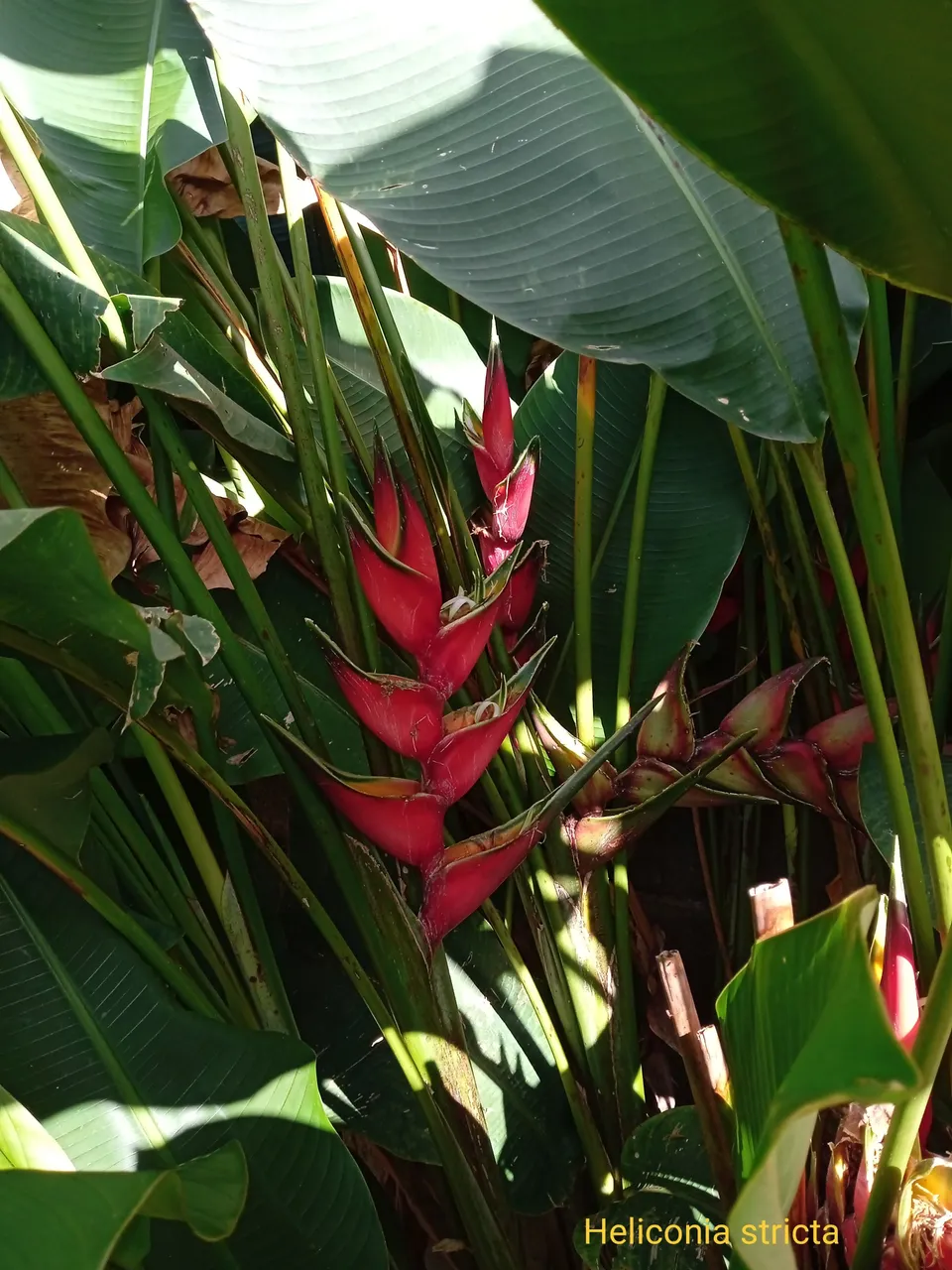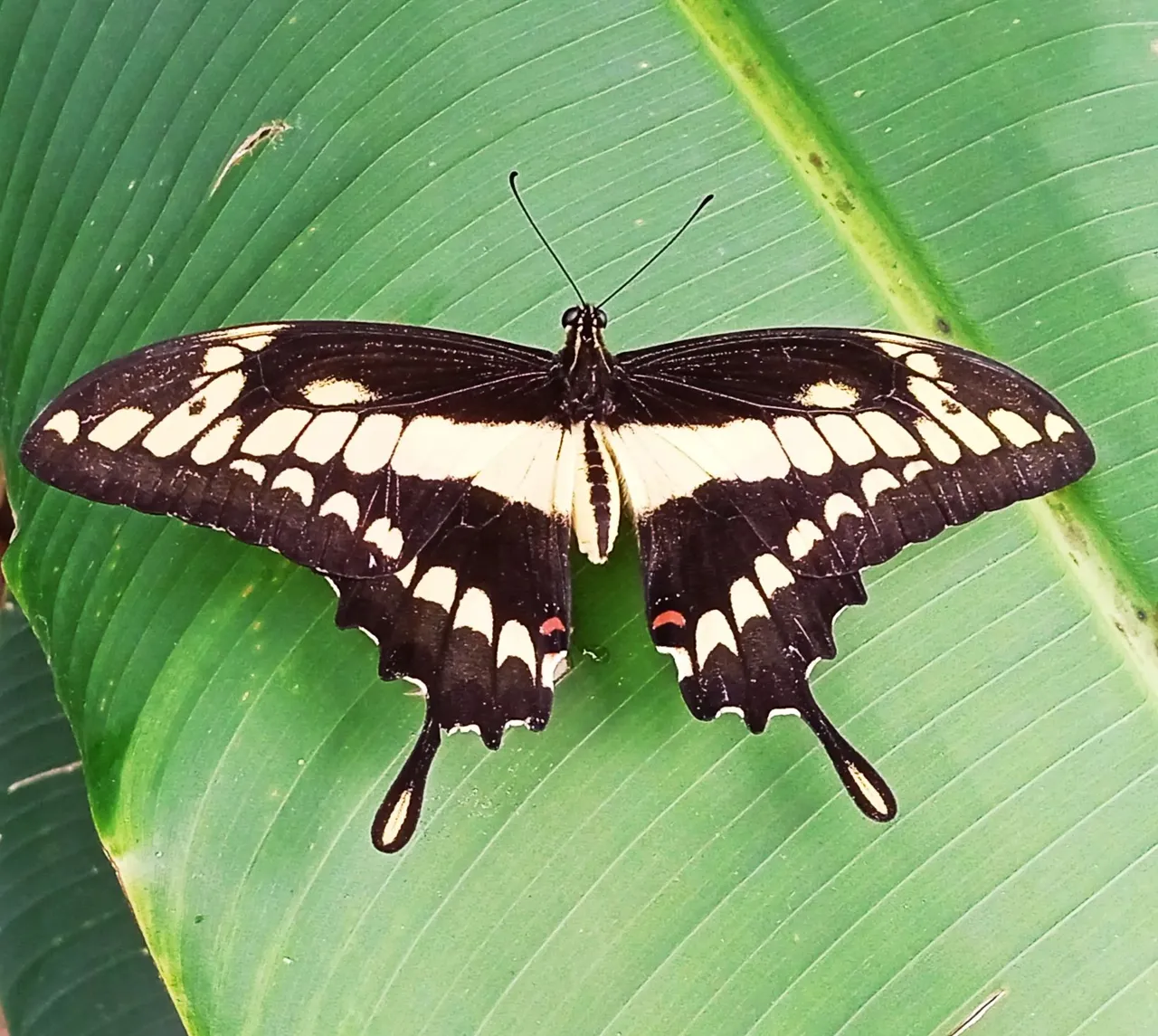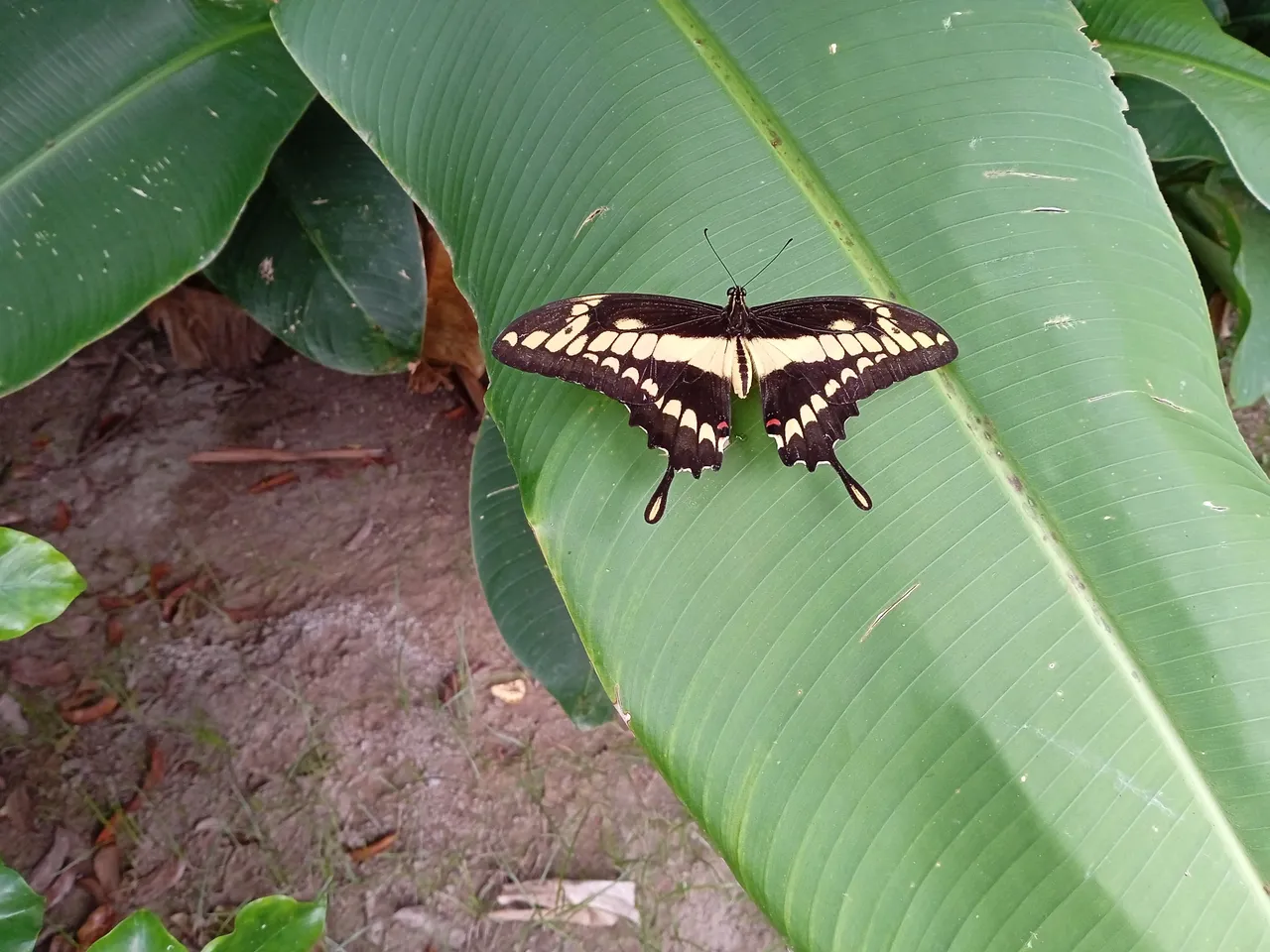Recientemente, una mariposa poco común estuvo largo rato posada sobre la hoja de un platanillo (Heliconia stricta), en nuestro jardín.
Recently, a rare butterfly was perched for a long time on the leaf of a banana tree (Heliconia stricta), in our garden.


Tuve tiempo de sobra para hacer la captura porque estaba muy tranquila y parecía que estaba posando 🦋. Investigando con Lens https://lens.google/ supe que se trata de la mariposa de los naranjos (Papilio thoas), especie de lepidóptero ditrisio de la familia Papilionidae que habita desde el sur de los Estados Unidos y México hasta las partes más australes de Sudamérica.
I had a lot of time to do the capture because she was very calm and it looked like she was posing 🦋. Investigating with Lens https://lens.google/ , I learned that it is the orange butterfly (Papilio thoas), a species of Lepidoptera ditrisio of the Papilionidae family that lives from the southern United States and Mexico to the southernmost parts of South America.
Tiene una envergadura de 10 a 13 cm, la oruga tiene el aspecto de excremento de pájaros lo que posiblemente le sirve para engañar a posibles predadores, además se mueve muy poco, su movimiento es casi imperceptible por el mismo motivo, para evitar llamar la atención de los depredadores, como por ejemplo, las avispas. Eso explica por qué se mantuvo tanto tiempo en el mismo lugar 🤔.
It has a wingspan of 10 to 13 cm, the caterpillar has the appearance of bird droppings which possibly serves to deceive possible predators, it also moves very little, its movement is almost imperceptible for the same reason, to avoid attracting attention from predators, such as wasps. That explains why he stayed in the same place for so long 🤔.
En los trópicos vuela en todas las épocas del año. En el Hemisferio Norte vuela de abril a julio según la latitud. En el hemisferio sur vuela en los meses correspondientes de primavera y verano. La larva se alimenta de plantas de la familia de los citrus 🍊 y Rutaciae. El adulto se alimenta de néctar de Lantana, Caesalpinia y Bougainvillea, entre otras.
In the tropics it flies at all times of the year. In the Northern Hemisphere it flies from April to July according to latitude. In the southern hemisphere it flies in the corresponding months of spring and summer. The larvae feed on plants of the citrus family and Rutaciae. The adult feeds on nectar from Lantana, Caesalpinia and Bougainvillea, among others

 >Lantana
>Lantana
Existen registradas otras subespecies de Papilio, como el Papilio Ulises, que tiene colores muy bonitos y brillantes, pero que son más difícil de capturar. El Papilio thoas se suele ver por la ciudad de Mar del Plata, Buenos Aires, Argentina, en zonas con vegetación.
There are other subspecies of Papilio registered, such as Papilio Ulises, which has very beautiful and bright colors, but which are more difficult to capture. The Papilio thoas is usually seen in the city of Mar del Plata, Buenos Aires, Argentina, in areas with vegetation.

Espero que les gusten estos lepidópteros tanto como a mí 😊
I hope you like these Lepidoptera as much as I do 😊
Referencias:
Papilio thoas. Wikipedia, la enciclopedia libre. es.m. wikipedia.org.